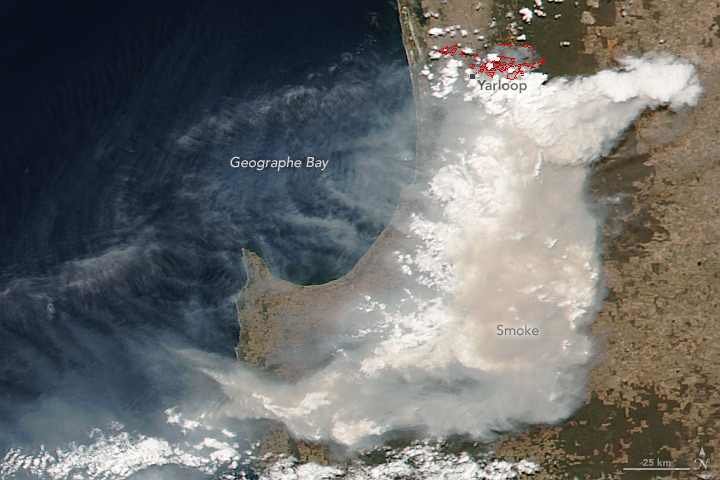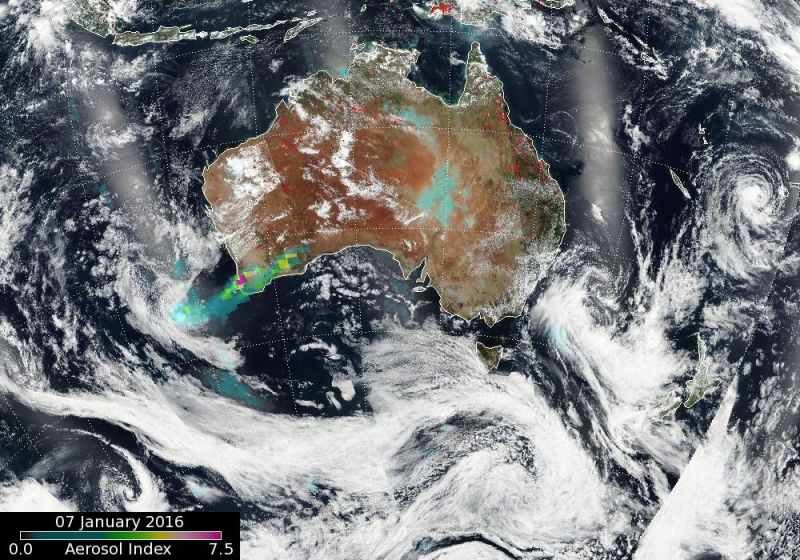Over the past few years, persistent drought conditions have transformed vast swaths of Southern Australia into a tinderbox. But thanks to an unsavory combination of El Niño and global warming, this year's spring was exceptionally hot and dry. In November, the Australian government issued one of the grimmest fire season outlooks in recent memory, and now, our planet is making good on that prediction.
On January 6, a lightning strike triggered a bushfire in Lane Pool Reserve, located near the city of Perth in Southwest Australia. With plenty of fuel on the ground, the blaze spread rapidly, engulfing the nearby town of Yarloop and destroying at least 128 homes and 41 other structures, according to the Department of Fire and Emergency Services. As of yesterday, the fire had burned through a whopping 276 square miles (177,000 acres)—placing it on par with the largest blazes to hit North America this past summer.
In fact, the fire was so vicious that it created its own weather system: a pyrocumulus "fire cloud," captured by the the Visible Infrared Imaging Radiometer Suite on NASA's Suomi NPP satellite on January 7. Pyrocumulus clouds are similar in appearance to other cumulus clouds. The difference, NASA explains, is that the heat forcing air to rise doesn't come from thermal radiation, but from—you guessed it—fire.
The good news is, emergency services have managed to contain the inferno. The bad news? This fire could be a taste of the future. Southern Australia was never a stranger to wildfires, but as Amanda McKenzie, CEO of the Climate Council, told Huffington Post Australia, "Climate change is worsening this bushfire weather. Heatwaves are hotter, longer and occurring more often."
Indeed, as November report by the Australian Climate Council noted, the global fire season length had increased by about 20% over recent decades. The report points out that increased fire season length in Australia will cause more overlap with the North American fire season, which could stretch our shared firefighting resources thin:
Some of Australia's key firefighting aircraft are leased from overseas and are contracted to North American firefighting services during their summer. The fire seasons of the two hemispheres - and the demand for these critical shared firefighting aircraft - will increasingly overlap, challenging such arrangements.Since October, bushfires in Australia have devoured over 1.2 million acres of land and killed tens of thousands of livestock, according to the Australian Climate and Firefighters Alliance. It's been such a bad year already that the Fire Brigade Employees' Union just called for an overhaul of the country's fire response system, including a merger of urban and rural firefighting units and a request that the entire force be doubled.
Let's hope they get the backup they're asking for. If the 2015-2016 fire season is indeed a harbinger of the future, then Australia—like many parts of the world—is going to need all the help it can get.





The world will end in fire this time.